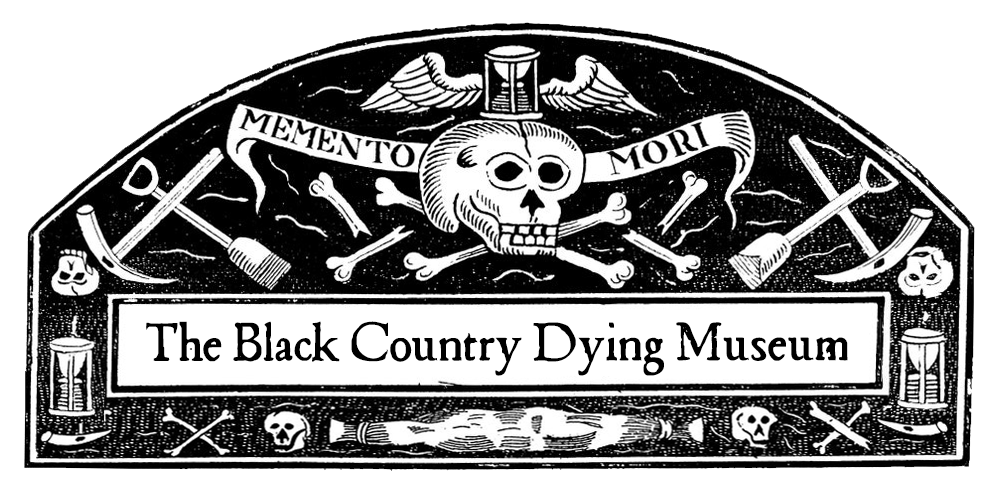Many non-conformist chapels built in the 18th and 19th centuries had their own burial grounds .This was both (especially in the 19th century) as a response to the overcrowding in many churchyards in the towns where population was growing as a consequence of industrialisation, but also because of a dislike by many non-conformists of being buried in consecrated ground, that is ground that had been blessed and made special by the local Church of England Bishop, as they saw this practice as closely related to what they regarded as ‘popish superstition’ and a practice not authorised by the Christian Bible.
The burial ground that belonged to the old Wesleyan Chapel in Oldbury, by the junction of Wesley Road with Church Street, directly opposite the Big House, was tucked into a triangle of land just off the end of New Meeting Street and bounded to the north and east by the (now filled-in) Birmingham Canal. In fact this plot of land was the site of the original Oldbury Wesleyan Chapel as well, which was replaced by the chapel (now the New Testament Church of God) on Church Street as the congregation grew too large for the original chapel, in 1853. You can see it marked on the map. It is just open space now, and the start (or finish!) of a footpath linking Queen St and Poplar St. You wouldn’t think it but many of Oldbury’s Victorian Methodists are still buried there. Its a shame there is no memorial to them.

Forgotten and abandoned non-conformist burial grounds are not uncommon, but it is much more unusual to find a forgotten Church of England churchyard. But there’s one in Oldbury, only a hundred yards from the Wesleyan Chapel.
Oldbury was originally part of the parish of St John the Baptist in Halesowen, and parishioners had to attend church over four and a half miles away, for services marriages weddings christenings and funerals. That would be a brisk hour and a half’s walk there, and the same back. So in 1529 the people of Oldbury raised enough money to build themselves a chapel of ease, still within the parish of St John the Baptist, dedicated to St Nicholas, in Oldbury market square. It occupied the site of the Oldbury war memorial, opposite the much more recently built Council House. You can see it marked on the map in the lower left hand corner marked with a cross: it says “Ch. site of.” The map dates from the 1890s.
Although the chapel of St Nicholas was nominally Church of England (or it was after Henry VIII’s break with the Roman Church in 1534!) it was for much of its time dominated by protestant and non-conformist congregations, and appears to have operated with no oversight from St John the Baptist and little from the Bishop of Lichfield (Oldbury was until 1844 part of the county of Shropshire, but that’s another story). It was only brought back under Church of England control in 1705, having seen the militia called out on more than one occasion when particularly radical preachers were believed to have been invited to conduct services there. Whether or not the grounds surrounding the chapel were ever consecrated is not known – there are no records saying they were – which may account for it being forgotten. But by 1715 burials were certainly being carried out there – by the time the chapel was replaced by the much larger Oldbury parish Church of Christ Church (opened in 1844 with its own, consecrated, burial ground) there had been over 800 internments.

The chapel of St Nicholas, in a ruinous condition, was demolished soon after and the chapel yard turned into a public park. Developments in Oldbury as a consequence of Victorian and Edwardian growth saw the park’s boundaries nibbled away. By the early 20th century I think few people remembered the chapel, let alone the burial ground, and the erection in 1924 of the Oldbury War Memorial on the site was just co-incidental. Market Squares were often the first choice for locating a town’s own memorial to its fallen soldiers. In fact the extent (and even existence) of the burial ground seem to have been forgotten, as various road widening schemes and levelling works took place to improve bus and car access throughout the 20th century.
Then during further road improvements in 2001 some coffins were uncovered only inches below the surface. St Nicholas’s burial ground was briefly remembered, and then covered up and forgotten. As it is today. So next time you visit the Sainsbury supermarket, or attend a memorial service at the Oldbury Cenotaph, spare a thought for all the unremembered people of Oldbury lying buried beneath your feet. We should remember them too! What a shame they have been forgotten.


Leave a comment